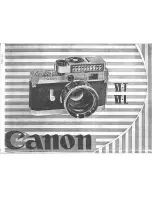
4-6
RedMAX Administration and Maintenance Guide
Redline Communications Inc. Confidential and Proprietary
Completion of the Indoor Procedure
Power up the system. Log into the Web interface and record a second set of status and
interface measurements. Print copies of the pages and ensure they are clearly dated and
contain the name, serial number and MAC address of the device from which they were
obtained. These pages should be added to your maintenance records.
Verifying Power and RF Signal Cabling
Cable testing is required to detect imperfections or damage that may cause reflection of
incident energy throughout the length of the cable. The detection should also include
Distance-to-Fault (DTF) measurements to accurately determine the location of the cable
fault. Damage along a cable length can take the form of a small dent or a change in the
diameter of the cable that occurred in transport or during installation.
Imperfections in the cable may often be caused during the manufacturing process. Cables
may also contain one or more discrete faults, due to a bent or damaged cable,
contaminated dielectric, a poor cut or a bad connector, for example.
Whatever the cause of the damage or imperfection, the resulting defect may cause signal
reflections. The reflections from the individual imperfections may add up to the point that
that they can be measured as cable loss or return loss. With periodic faults the energy
reflected can appear in the loss measurement as a reflection spike at a frequency
corresponding to the spacing of the imperfections, where the spacing between the periodic
imperfections is one half of the wavelength at the frequency of the reflection spike.
Cable testing techniques include loss measurements (return loss, insertion loss) and
transmission measurements (e.g., VSWR). Return loss measurements are expressed in
dB with 0 dB being recorded when measuring an open or short circuit, and typically 40 to
60 dB being displayed when measuring a load condition with proper impedance matching.
With transmission tests, the transmitted and reflected signals combine to create a standing
wave. The voltages of the peaks and troughs of the standing wave are measured and
expressed in terms of the voltage standing wave ratio (VSWR).With no reflections, i.e., a
perfect transmission system, the VSWR is unity. With higher reflections the VSWR will
increase to the point where the reflections become unacceptable.
Interface (IF) Cable
The interface cable connecting the IDU to the ODU is a critical component of your system.
The cable quality and loss profile have a significant impact on the performance of the
wireless link. If you opt to purchase this cable separately, the cable must be of an approved
type and be assembled using the recommended connectors. Refer to the RedMAX Base
Station Installation Guidelines for a list of approved cables that can be used for this
purpose.
















































